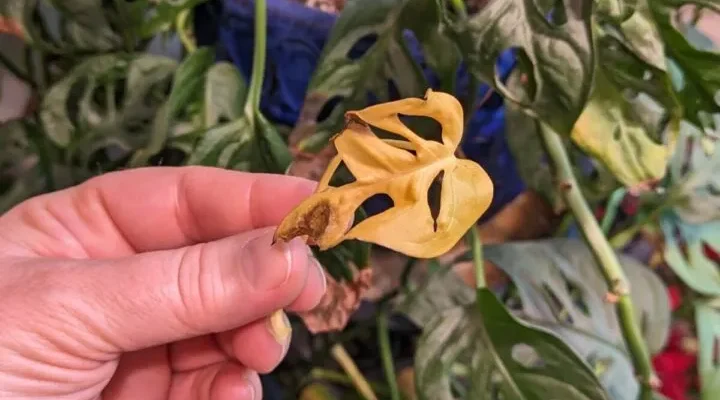Yellow leaves on your houseplant are aggravating. Why are you yellow? Are you dying? Have I killed you? Is something else killing you? What’s going on?
And have you ever noticed that it’s never your whole plant that turns yellow?
It’s always one or two leaves, which makes the whole thing even more confusing. The rest of your plant looks okay, but, hey, look, this one here and that one there are yellow. What gives? Believe it or not, there’s a simple explanation, and it’s usually an easy fix.
The Number One Cause of Yellow Leaves
The number one reason you get yellow leaves on your houseplant is overwatering. Yup, I know, it’s not what I was expecting either, but there it is. You would think it would be underwatering, which can also cause yellowing leaves, but most of the time, it’s because your plant was sitting in soil that’s too wet.
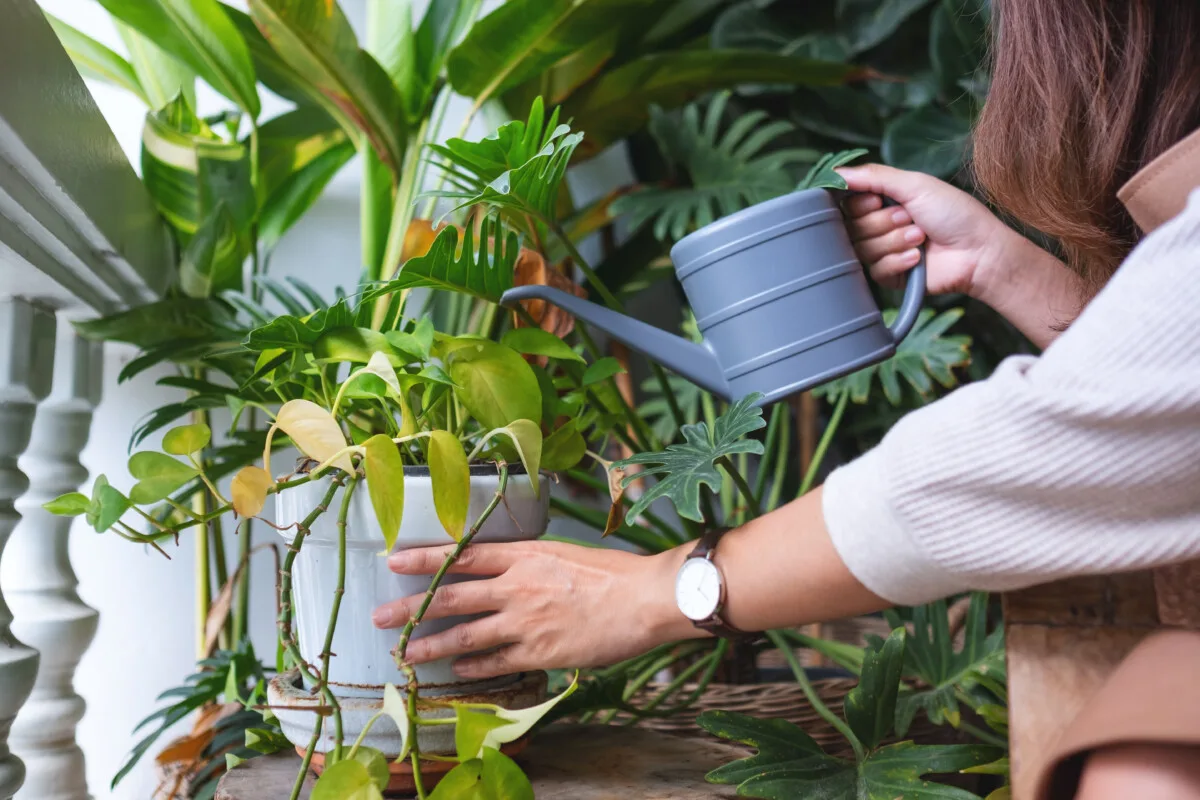
There’s a reason nearly every houseplant care guide suggests “well-draining soil” no matter the plant. It’s because despite being the part of the plant used to transport water, the roots also help the plant to breathe.
If the roots spend too much time sitting in water or soil that’s waterlogged, the roots can’t function the way they’re supposed to. Essentially, the roots are drowning because they can no longer access the oxygen in the soil. Water and other nutrients stop being delivered to the plant normally, and it suffers. That’s when you’ll get a leaf here and there that turns yellow.
But do you want to know the weird part?
The way you fix it is by doing nothing.
Yup, nine times out of ten, the problem has already corrected itself, and that’s why you only see a few yellow leaves on your plant. The soil dried out enough that the roots began functioning again. The damage that caused those yellow leaves has already happened and corrected itself by the time you see it.
So, cut those yellow leaves off the plant and pitch them in the garbage.
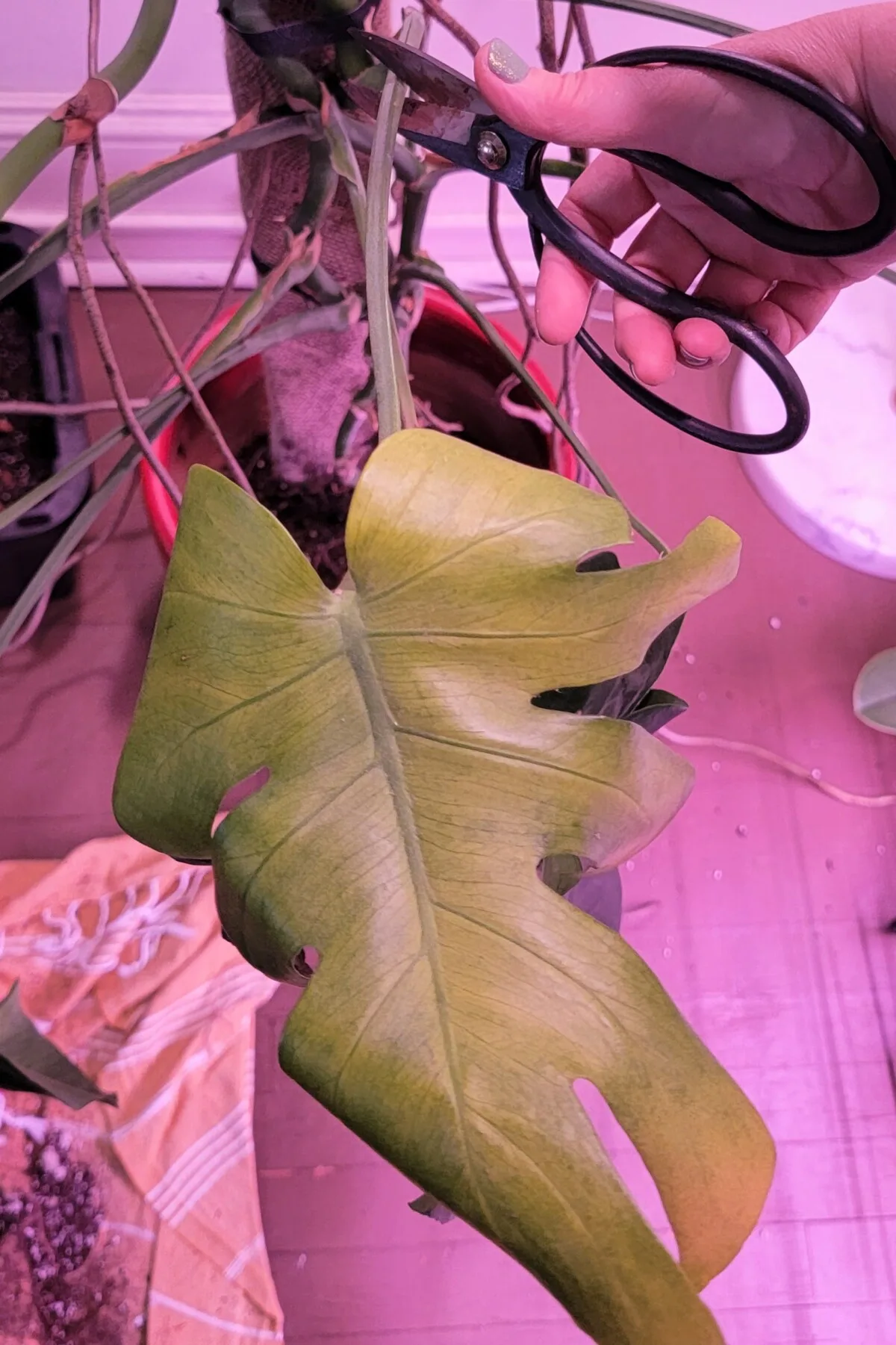
You can prevent yellow leaves from overwatering in the future by watering only when the top inch of soil is dry. It’s also important to remember that in the winter, when plants are dormant, they need to be watered less frequently.
If you water them as often as you would during their active growth cycle, the water sits unabsorbed until it evaporates. You end up starving the roots of oxygen until the soil dries out again.
This is why it’s more common to find yellow leaves on your plants in the winter.
Many houseplants can go as long as three to four weeks between watering in the wintertime.
Of course, overwatering isn’t the only reason for yellow leaves on your houseplants; just the most common. If you notice more leaves turning yellow, then it’s time to dig a little deeper, as there may be another issue at play.
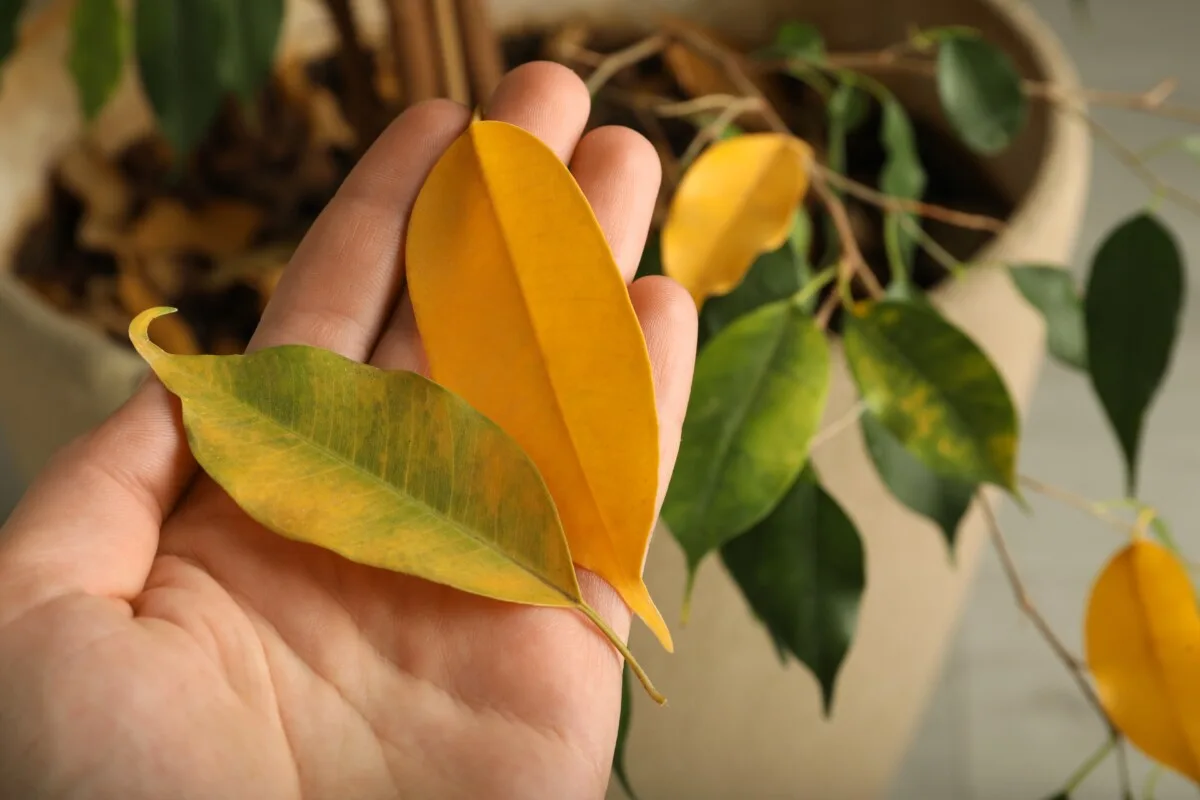
Watering Issues
Yes, I know, we just talked about overwatering, but if you’ve got more and more leaves turning yellow, your plant has likely succumbed to root rot. At this point, the roots can no longer recover, even if the soil has dried out some. You’ll need to take the plant out of the pot and get a good look at the roots to determine the extent of the damage.
You’ll want to read and follow our guide to diagnosing and treating root rot. If you catch it early enough, you can usually save the plant.
It’s important to use pots and planters with a drainage hole in the bottom. Doing so can save you a lot of headaches.
As I mentioned, not watering enough can also cause yellow leaves. Overwatering usually causes a brighter yellow leaf (nutrient issues), whereas plants that aren’t getting enough water tend to have paler yellow leaves, almost as if the plant is fading. You may also notice that the yellowing leaves are at the outermost crown of the plant.
This is one way I know my spider plant needs to be watered. The leaves start to look less vibrant.
To fix underwatered plants, well, I’m sure I don’t need to tell you what to do. But you might want to consider setting a weekly reminder on your phone to check and see if your plant needs to be watered. Your finger is the best soil moisture tester on the planet. Stick your finger in the soil. If it’s dry up to your first knuckle, it’s time to water.
Lacking Nutrients
I have already pointed out that when leaves turn yellow due to overwatering, it’s usually a bright yellow, almost like a banana. That’s because that particular leaf wasn’t getting the proper nutrients needed for photosynthesis. If you know you haven’t overwatered your plant, but you’re still getting bright yellow leaves, then it’s probably a nutrient issue.
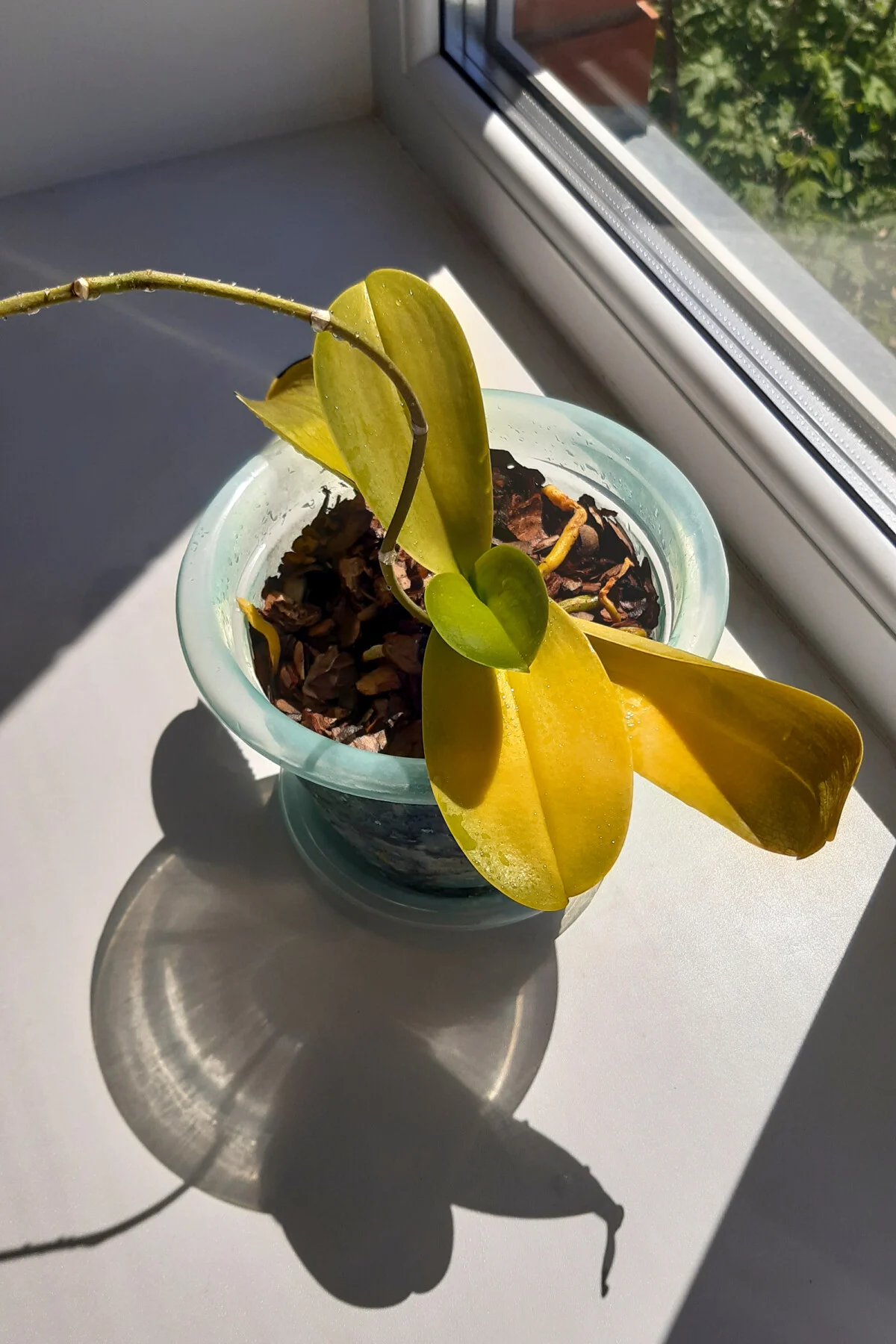
The easiest thing to do is to feed your plant with a balanced liquid plant fertilizer such as Dr. Earth’s Pump & Grow Liquid Plant Food. I really like this formula because it won’t burn your plant’s roots, and the NPK ratio is 1:1:1, so it’s nearly impossible to overfeed with it.
Potted plants only have access to whatever nutrients are in the small amount of soil in their pots and whatever nutrients you provide. It’s important to feed houseplants regularly throughout the year, especially during their growth cycle.
Lighting Issues
Just like water, too much or too little light can cause yellowing in houseplants. Some plants can be “bleached” by the sun, causing the vibrant colors of their leaves to fade, while others will grow paler leaves if they don’t receive enough sunlight. Be sure your plant is getting the right amount of light for that particular species.
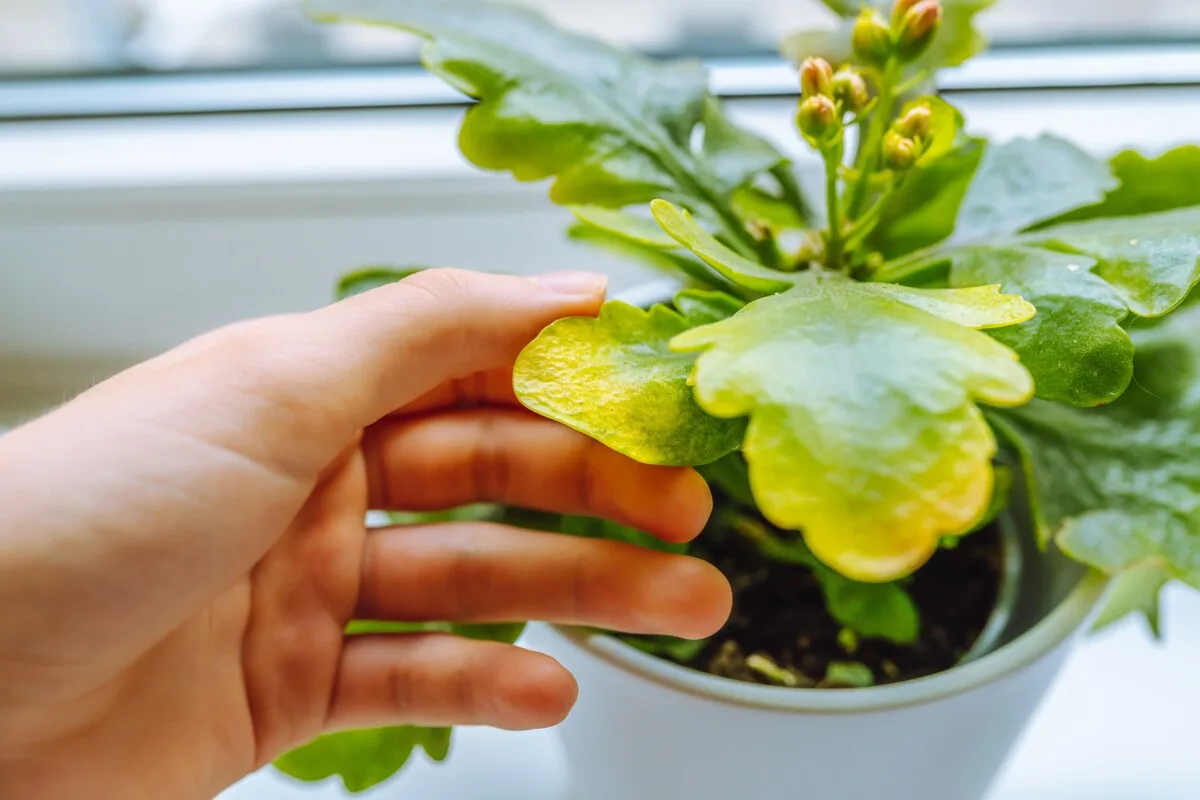
Be patient, as sometimes it can take time to find the Goldilocks spot for a particular plant, the spot that’s “just right.” Also, keep in mind that light changes with the seasons, so your plant may need to be moved to a different location depending on the season.
For instance, in the winter, my African violets love being right on the windowsill in my living room, but in the summer, it’s much too hot for them there, and they burn.
Pests and Fungi and Bacteria, Oh My!
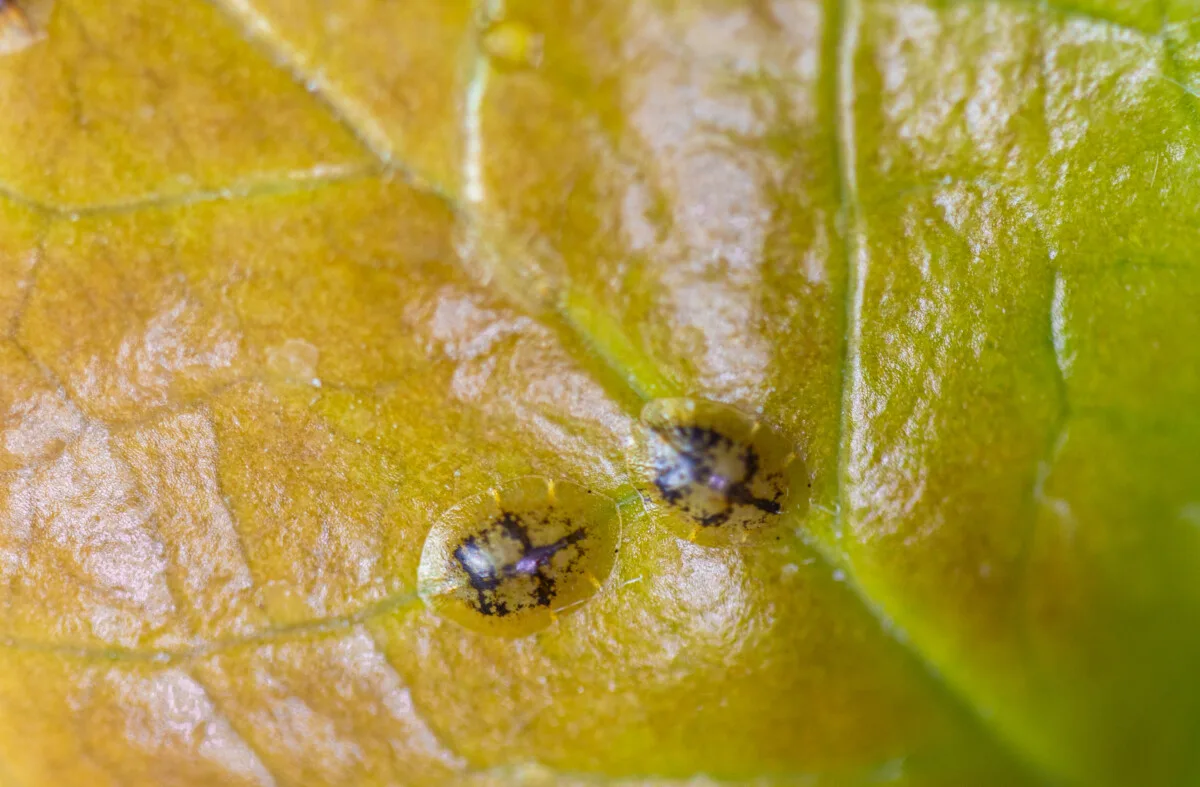
If you notice yellow spots or blotchy yellow patterns on the leaves of your houseplant, there is a good chance that something is attacking your plant.
Check plants closely for signs of pest damage. Spider mites, in particular, can cause tiny yellow pinpricks on leaves. After enough time has passed, the entire leaf looks washed out and yellow. Learn how to deal with spider mites here.
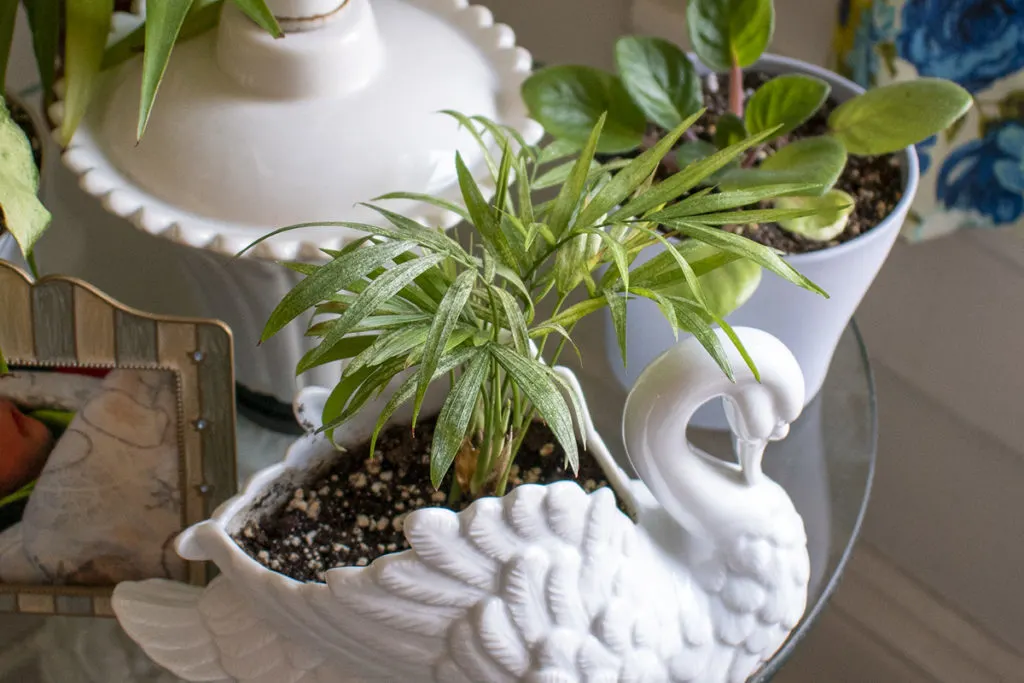
Aphids are another common pest that can cause leaf yellowing. Look for the white shed exoskeletons of aphids on the stems or shiny, sticky patches of honeydew. Aphids can be a pain, but if you catch them early, they’re much easier to deal with.
Fungal or bacterial infections can also cause yellow spots or overall yellowing of leaves. It’s important to remove affected leaves promptly and treat the plant with appropriate fungicides or bactericides. You will want to quarantine your plant away from other plants while you treat it.
Likewise, anytime you bring a new plant into your home, it’s important to keep it away from your other plants for several weeks to a month to ensure it’s not harboring pests or diseases.
Sudden Environmental Extremes
It’s the least likely scenario, but sometimes, sudden changes in temperature, humidity, or drafts can stress plants out, causing leaves to turn yellow.
For instance, you might put your beautiful red Christmas cyclamen on an end table right by the door and then leave the door open while you hang Christmas lights outside on your balcony on a cold, windy day.
You might also be surprised to find every last leaf on that cyclamen yellow and flopped over two days later. I’m not saying I’ve done this personally, just that it could happen to someone. Not me, but someone. Try not to be like “someone.”
It Was Just Their Time to Go
It’s also completely natural for older leaves to turn yellow and eventually drop off. If you notice that only the oldest leaves are yellowing and dropping off the plant, then it’s probably safe to assume this is part of the natural growth cycle.
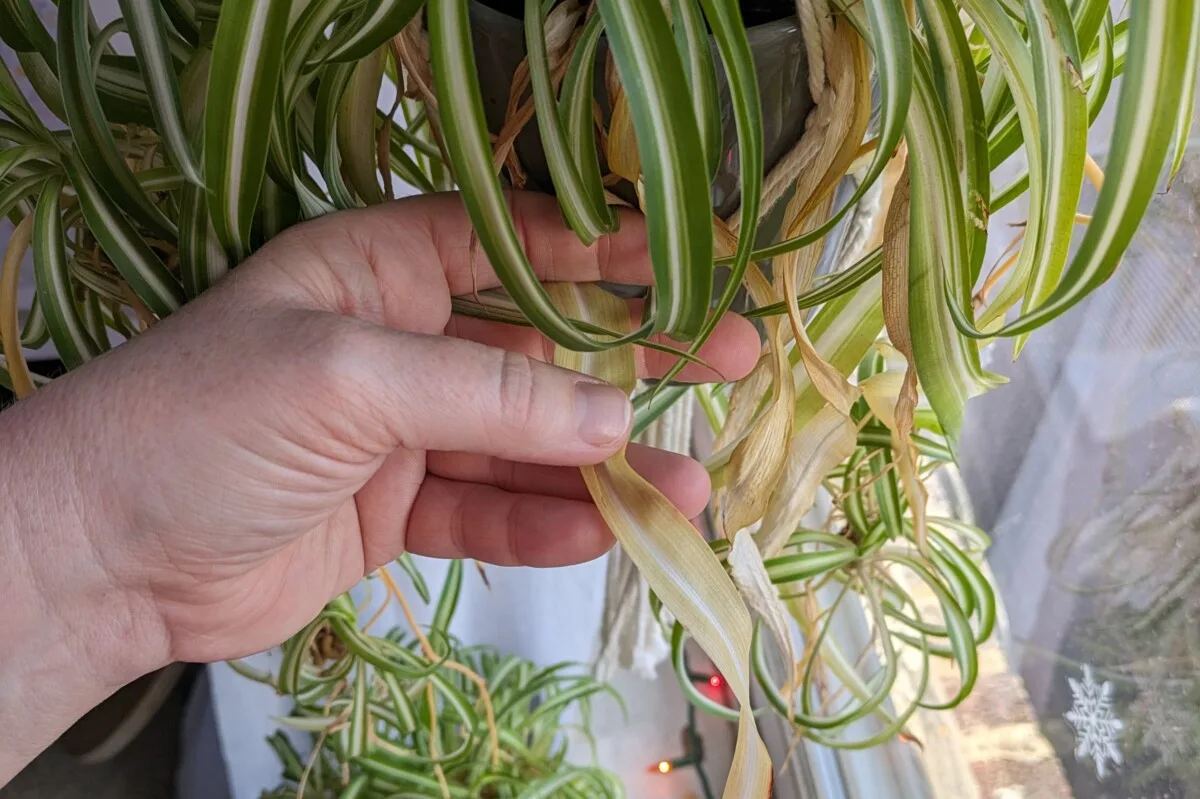
Whenever you’re dealing with a plant health issue, I always suggest caution and observation. Make one change at a time and give it a couple of weeks to see if it improves before trying something different.
Most of the time, these issues tend to clear up on their own, leaving us scratching our heads. However, if you’ve ruled out the usual causes for yellowing leaves and the problem persists, you may wish to consult an expert at a local garden center or contact your county agriculture extension office.
